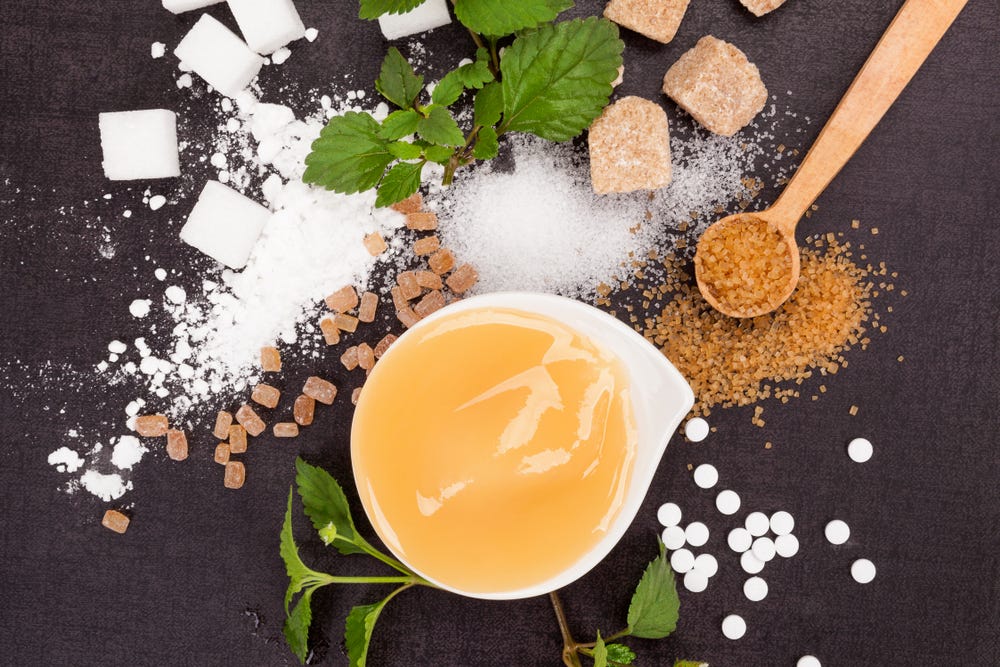Artificial sweeteners are a staple across all consumer products. One of the most ubiquitous sweeteners is acesulfame potassium (or Ace-K, for short). Like another artificial sweetener sucralose, Ace-K is considered a high intensity sweetener and is 200 times sweeter than sugar. It is sold in grocery stores under the brand name Sunnet® or SweetOne® and is used in the Equal® sweetener packet. Ace-K is also used in toothpaste, mouthwash, medicines, and a wide variety of different low or no sugar food and beverage products. In fact, Ace-K is so widely used in the human diet that researchers use it as a marker to determine the extent of which swimming pools are contaminated by urine!
Acesulfame-K was discovered in 1967 by a German scientist. After accidentally dipping his fingers into a class of chemicals he was working with, he licked his fingers and discovered that they tasted sweet. Further research determined that this class of chemicals had various levels of sweetness and Ace-K was chosen as the representative chemical of this class due to its ease of synthesizing. In 1978, the World Health Organization named the chemical and in 1983 it was approved for use in food and beverage products in Europe. In 1988, the FDA in the United States approved its use in some types of products and eventually gave full approval for use across all food and beverage products (except for meat and poultry) in 2003.
Safety studies are essential before any ingredient is allowed to be used in food and beverage products. When examining the safety studies surrounding Acesulfame-K, the Center for Science in the Public Interest (CSPI) found that these studies may have been flawed or conducted incorrectly. This group, as well as other critics, state that the safety studies did not demonstrate Ace-K’s safety at large levels to the population as a whole. As a result, Ace-K might be linked to cancer, hormone disruption, and risks to pregnant people due to the presence of methylene chloride (a chemical used in its synthesis) and acetoacetamide (a breakdown chemical produced from Ace-K). Credible studies have shown that a large amount of Ace-K would need to be consumed in order for methylene chloride to accumulate to a toxic level. Acetoacetamide accumulation occurs when acidic products containing Ace-K sit for long periods of time (i.e. beyond their shelf life) or potentially when Ace-K is digested. Studies have shown that consuming acetoacetamide in large dosages can cause hormone disruption. However, there are no clear studies that show that Ace-K breaks down to acetoacetamide in the body. Most (if not all) studies show that it is absorbed into the blood stream and excreted in the urine within 24 hours, without breaking down. Critics also cite other studies that show that women who regularly consume Ace-K pass a small amount of it in breast milk. Additionally, animal-based studies have shown that large dosages of Ace-K might change and disrupt the gut bacteria.
Most (if not all) of the toxicity studies use Ace-K at dosages much higher than the typical diet. The FDA has set the acceptable daily intake (ADI) of Ace-K at 15 milligrams per kilogram of body weight per day. So, for a 150 pound person this equates to 1000 milligrams per day. Most food and beverage products contain between 10-50 milligrams per serving and a study has shown that the average daily intake of Ace-K to be at around 100 milligrams per day, well below the acceptable daily intake. If the toxicity studies are flawed, a person would need to eat and drink an extreme amount of Ace-K to experience toxicity.
Do you try to avoid products containing Ace-K? If so, why?




